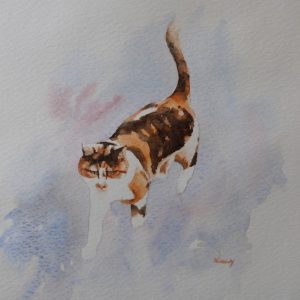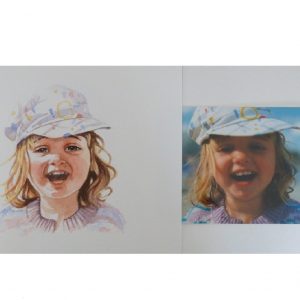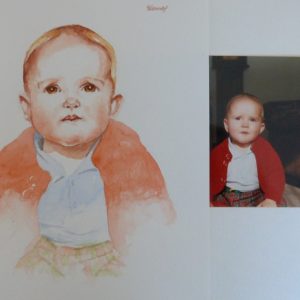Practise aids
Now that the weather is distinctly autumnal and winter is just around the corner, spending time indoors in the dry, comforting warmth of the home is invariably a more inviting prospect. Although this doesn’t mean it’s a time to pack away the pencils, brushes and paints.

I decided to look through a box of old photos and came across two interesting photos of my step-children and a picture of a now, sadly deceased cat which I thought would make good images to practise on.
This is a quick watercolour sketch of Lizzie before she went a bit senile and started running around with my wife’s slipper on her head! Bless her. It isn’t the greatest photo in the world, but I liked the negative spaces of white fur and the orange/brown patterns of the fur. It’s just a simple 20-minute sketch with the minimum of detail but it is still a good exercise for learning which parts of the white paper to leave to give maximum effect.
Here are two contrasting photos of Tom and Becci, and I don’t just mean in expressions. The photo of Becci laughing is well captured but there are a lot of shadows caused by the jaunty hat, so I had to adjust the tones and really study the photo to pick out the details of her eyes. Again, because I didn’t want to lose all of the shadow, it is good practise for tonal balance.
Tom’s photo is the polar opposite. (I am reliably informed he did eventually cheer up!) Baby portraits can be difficult because the proportions of the head are obviously different from adults. The features are more rounded and smoother, the eyes larger and mouth smaller. In the photo, his features are brightly lit with just a slight shadow being thrown on to the right side of his face. This sets the challenge of picking out details and studying the picture to capture the expression and make sure the proportions are correct. Again, good practise.

